For a violinist, the violin bow is crucial to achieving comfortable playability and good-quality sound. And so selecting the right one all depends on how it feels as well as its tone.
This comprehensive guide compiles the best violin bows, helping you find the perfect one to match your playing style and bring out the best of your violin voice.
In a hurry?
To get you started, here are our favourite violin bows at the moment and why we like them:
| Goetz and Leicht GL-V Carbon Violin Bow | The leather thumb grip provides comfortable playability. | Check the current price |
| Violin Bow by Gear4music | Perfectly balanced, with a high-quality ebony adjuster. | Check the current price |
| Primavera Hardwood Violin Bow | Comfortable hold for beginners. | Check the current price |
Will a violin bow help my playing?
Choosing the right bow is incredibly important for your playing experience as it substantially affects the sound and playability of your violin. A well-crafted bow allows for better control and response, making it easier to produce clean and articulate notes. So, yes, a violin bow will help – however, it’s important to note that regular practice and mastering techniques will have the most impact on your playing.
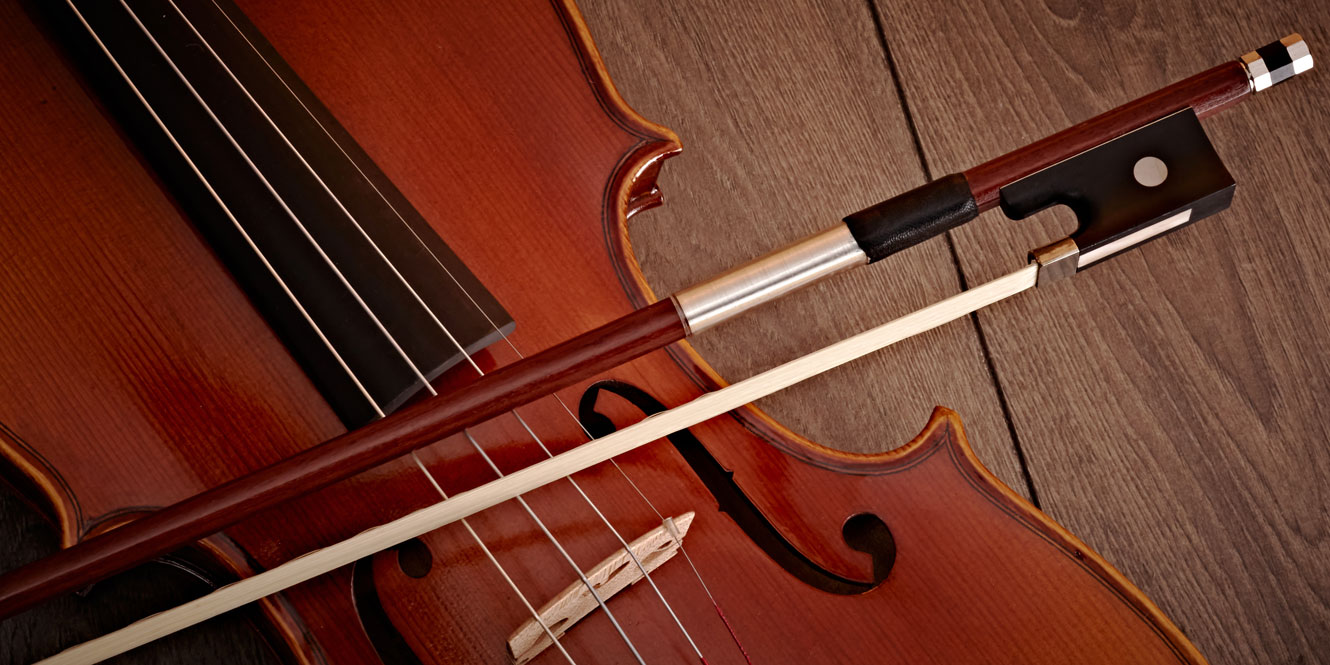
The best violin bows
1. Glasser Carbon Composite Violin Bow, 4/4
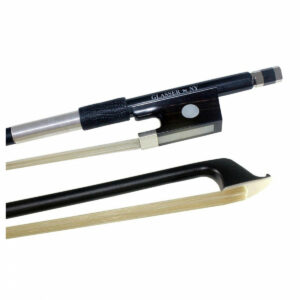 Material: Carbon Composite
Material: Carbon Composite
Bow shape: Round
Pros
- Lightweight for increased manoeuvrability
- Easily adjustable tension screw
- Resistant to humidity and temperature changes
Cons
- Less traditional feel compared to wooden bows
One great option for violinists is the Glasser Carbon Composite Bow. The carbon composite build ensures a product that’s not only durable but also won’t warp due to humidity and temperature variations – a common issue with wooden bows.
The bow’s balance is carefully tuned, with the balance point centred for a natural, responsive feel. Ideal for beginner and intermediate players, this bow is an affordable, great-quality choice.
2. Violin Bow by Gear4music, 4/4 Size
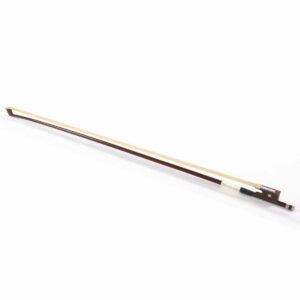 Material: Hardwood
Material: Hardwood
Shape: Round
Pros
- Easily adjustable
- Ideal for beginner players
- Hardwood construction offers a traditional feel
Cons
- Not ideal for professional players
The Violin Bow by Gear4music is ideal for beginners and intermediate players, whilst still offering high-quality materials that ensure durability and optimal balance. It features an ebony adjuster with two nickel bands, so you can tailor the bow to your sound whilst the included leatherette thumbpiece allows for good grip when playing.
3. P&H Violin Bow Fibreglass, Full Size
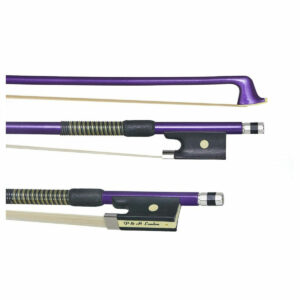 Material: Fibreglass
Material: Fibreglass
Bow shape: Round
Pros
- Highly durable and lightweight
- Low cost without quality sacrifice
- Easily replaceable bow hank
Cons
- Non-slip synthetic grip may not suit traditional players
The P&H Violin Bow Fibreglass, Full Size is perfect for violinists seeking a balance of performance, affordability, and durability. This bow is resilient to withstand frequent use, temperature changes, and humidity.
The unbleached horsehair on this bow offers a natural tone, whilst its easy manoeuvrability makes bowing techniques such as spiccato or sautillé easier to execute. The synthetic leather grip then provides a comfortable and secure hold.
4. Goetz and Leicht GL-V Carbon Violin Bow
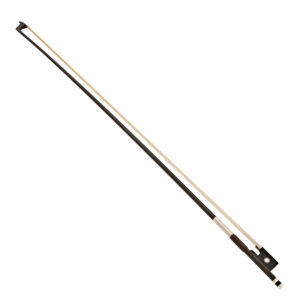 Material: Carbon Fibre
Material: Carbon Fibre
Bow shape: Octagonal
Pros
- Leather thumb grip reduces playing fatigue
- Excellent balance and playability
- Aesthetically pleasing with traditional design
Cons
- Designed for higher-level violinists
The Goetz and Leicht GL-V Carbon Violin Bow weighs 60 grams and is made from carbon fibre. It features silver lapping and a leather thumb grip for a fatigue-reducing hold, whilst its balanced weight allows for control over your playing dynamics and articulation.
This bow doesn’t warp due to its carbon features unlike other wooden bows and is created using 300-year-old bow-making techniques with 21st-century materials and technology over a 3-year development process.
5. Codabow Diamond NX Violin Bow
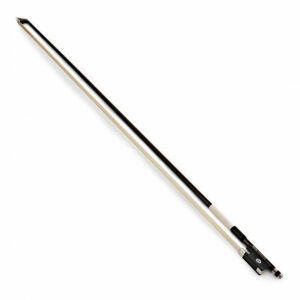 Material: Xebony
Material: Xebony
Bow shape: Round
Pros
- Superior bounce control for expressiveness
- Replicates traditional wood bows in feel
- Lifetime warranty for buyer’s assurance
Cons
- May require time to adapt to feel
The Codabow Diamond NX Violin Bow marries modern carbon fibre resilience with a Kevlar core to make a more sustainable violin bow. The sound quality produced by this bow is similar to Pernambuco bows but without warping issues.
Its Xebony frog enhances comfort and control, while the graphite diamond weave aids in superb bounce and articulation – perfect for violinists looking for a traditional feel with modern robustness.
6. Orchestra Carbon Fibre Weave Violin Bow, 4/4
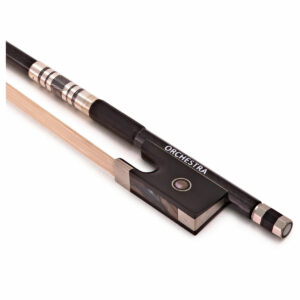 Material: Carbon Fibre
Material: Carbon Fibre
Bow shape: Round
Pros
- Increased strength and durability
- Nickel hardware offers stunning look
- Good value for advancing students
Cons
- Heavier than some premium models
The Orchestra Carbon Fibre Weave Violin Bow 4/4 is a robust bow perfect for players who want a mix of traditional and modern technologies. Its durable carbon fibre weave construction sutis those who prefer traditional wooden bows but require modern resilience. Aesthetically pleasing, the elegant nickel hardware finish offers a smart look, while the full-mounted ebony frog provides a secure grip and comfortable handling.
7. Hidersine Premium Unidirectional Carbon Violin Bow, 4/4
Material: Carbon 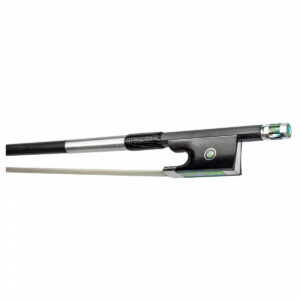
Bow shape: Round
Pros
- Enhanced strength and responsiveness
- Clean and articulate sound
- Offers the flexibility of wooden alternatives
Cons
- May take some time to adjust to the carbon fibre feel
The Hidersine Premium Unidirectional Carbon Violin Bow perfectly teams innovation with elegance. It’s constructed from unidirectional carbon fibre, maximising the bow’s strength and responsiveness. The bow also has an excellent balance, aiding in effortless handling and consistent, smooth bowing.
8. Hidersine 5049A Carbon Fibre Violin Bow, 4/4 Size
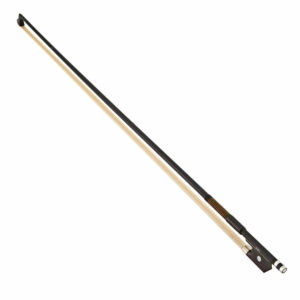 Material: Carbon fibre
Material: Carbon fibre
Bow shape: Octagonal
Pros
- Excellent response and control
- Balances well in the hand
- Carbon fibre construction offers durability
Cons
- Less suitable for historical performances
The Hidersine 5049A Carbon Fibre Violin Bow is designed with a range of abilities in mind. It incorporates a carbon fibre shaft and offers the durability and resilience needed for busy practice and performance schedules.
The bow strikes a fine balance, sitting comfortably in the hand, leading to more controlled playing and subtler nuances and expression. You can also readily adjust the tension to suit your preferences or changing performance conditions.
9. Primavera Hardwood Violin Bow, Round 4/4
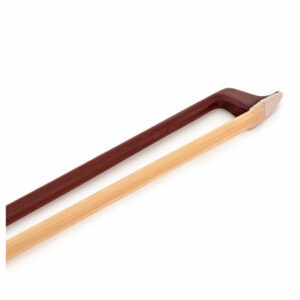 Material: Hardwood
Material: Hardwood
Bow shape: Round
Pros
- Great for students
- Natural horse hair offers a full-tone
- Comfortable grip for beginners
Cons
- Less durable than carbon fibre
The Primavera Hardwood Violin Bow is an outstanding choice for violinists seeking a balance between affordability, functionality, and traditional design. Ideally suited for students, this bow is crafted from quality hardwood.
Its manoeuvrability is particularly responsive and the round stick shape of the bow produces a flexible yet controlled feel. Plus, the bow is strung with natural horsehair, providing a full, rich tone and ensuring smooth contact with the strings that results in consistent and even play.
10. GEWA Massaranduba Violin Bow, Octagonal 4/4
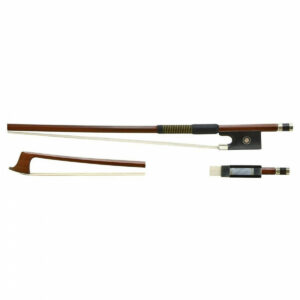 Material: Massaranduba
Material: Massaranduba
Bow shape: Octagonal
Pros
- Natural horsehair offers better grip on the strings
- Suitable for advanced bowing techniques
- Well-balanced for comfortable playing
Cons
- Slightly heavier feel than some models
The GEWA Massaranduba Violin Bow blends traditional craftsmanship with professional-grade performance. Built from Massaranduba wood – a sustainable wood that’s great for violin bows, the bow possesses a superior balance and weight distribution, making it ideal for intricate bowing techniques.
This bow stands out for its bounce manoeuvrability, which allows violinists to execute jumps and complex strokes with control and ease, crucial for articulate bow work.
11. Conrad Goetz Pernambuco Violin Bow 68
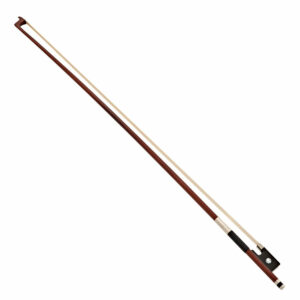 Material: Pernambuco
Material: Pernambuco
Bow shape: Octagonal
Pros
- Pernambuco wood for warmth and flexibility
- Ideal for advanced bowing techniques
- High-quality natural horsehair
Cons
- Requires careful maintenance
The Conrad Goetz Pernambuco Violin Bow 68 is known for its responsive and articulate Pernambuco wood construction. Slightly heavier than other carbon alternatives, its bounce manoeuvrability is second to none, allowing you to execute precise staccato or legato strokes and a variety of dynamic contrasts with ease.
The ebony frog ensures a comfortable and secure grip and also complements the bow’s sophisticated aesthetic. Strung with natural horsehair, the Conrad Goetz bow provides a rich sound and reliable traction on the violin strings.
12. P&H Violin Bow Carbon Fibre, Full Size
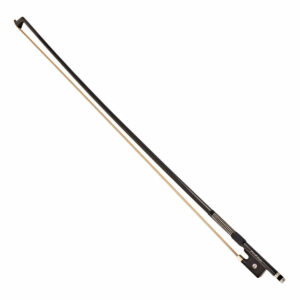 Material: Carbon fibre
Material: Carbon fibre
Bow shape: Round
Pros
- Easy tension adjustment mechanism
- Superior balance and handling
- Advanced lightweight carbon fibre construction
Cons
- Potential for less warmth in tone
Designed for the dynamic violinist, the P&H Violin Bow Carbon Fibre merges advanced material engineering with traditions. This bow has durability and flexibility, thanks to its carbon fibre composition. The opportunity for swift tension changes is a main benefit of this bow, which can be useful for transitioning between various sounds.
Plus, it has an even weight distribution which means it’s extremely well-balanced.
13. Codabow Joule Carbon Fibre Violin Bow
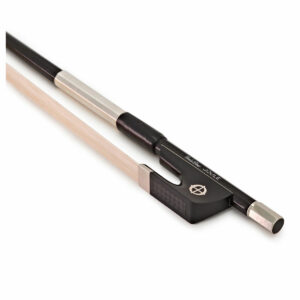 Material: Carbon fibre
Material: Carbon fibre
Bow shape: Round
Pros
- Responsiveness across diverse techniques
- Aero-Weight Carbon Fibre Design
- High endurance in varied conditions
Cons
- Lightweight qualities aren’t ideal for players wanting a heavier bow
The Codabow Joule Carbon Fibre Violin Bow is made with acoustic core technology, offering sonic richness, power, and projection that rivals that of the finest wooden bows. The bow features an exquisite Xebony-engineered ebony frog, which makes this bow more sustainable than other bows on the market whilst offering an exceptional grip for precise control.
The aerodynamic shape enhances the violinist’s ability to carry out advanced bowing techniques with minimum effort, fatigue, and maximum speed.
Things to consider when buying a violin bow
When shopping for a violin bow, it’s essential to weigh several factors beyond its price tag. Here are some top considerations:
Sound quality and feel
The bow is fundamental in shaping the sound that projects from your violin. Whether you are aiming for a bright, piercing sound to cut through an orchestra or a softer, mellow timbre for solo work, the bow must complement your violin and repertoire.
It also needs to feel comfortable to play. Factors such as the bow’s weight distribution, stiffness vs. flexibility, and shape – whether round or octagonal – will influence the ease with which you can manoeuvre the bow.
Build quality and bow materials
A well-constructed bow made from high-quality materials can elevate your performance. The tension strength, resiliency, and responsiveness are all reliant on the bow’s build. Whether opting for traditional woods like Pernambuco, modern materials like carbon fibre, or a hybrid, each has unique attributes and various weights that affect performance.
How often should I rosin my bow?
The frequency of rosining your bow largely depends on your playing habits and the sound quality you seek. Generally, it’s advisable to apply rosin to your bow every time you notice the sound becoming dull or flat. The frequency of this largely depends on your playing habits and the kind of sound quality you’re after.
For regular players, this may mean you have to rosin before each practice or performance session, whereas less frequent players might find rosining once a week sufficient.
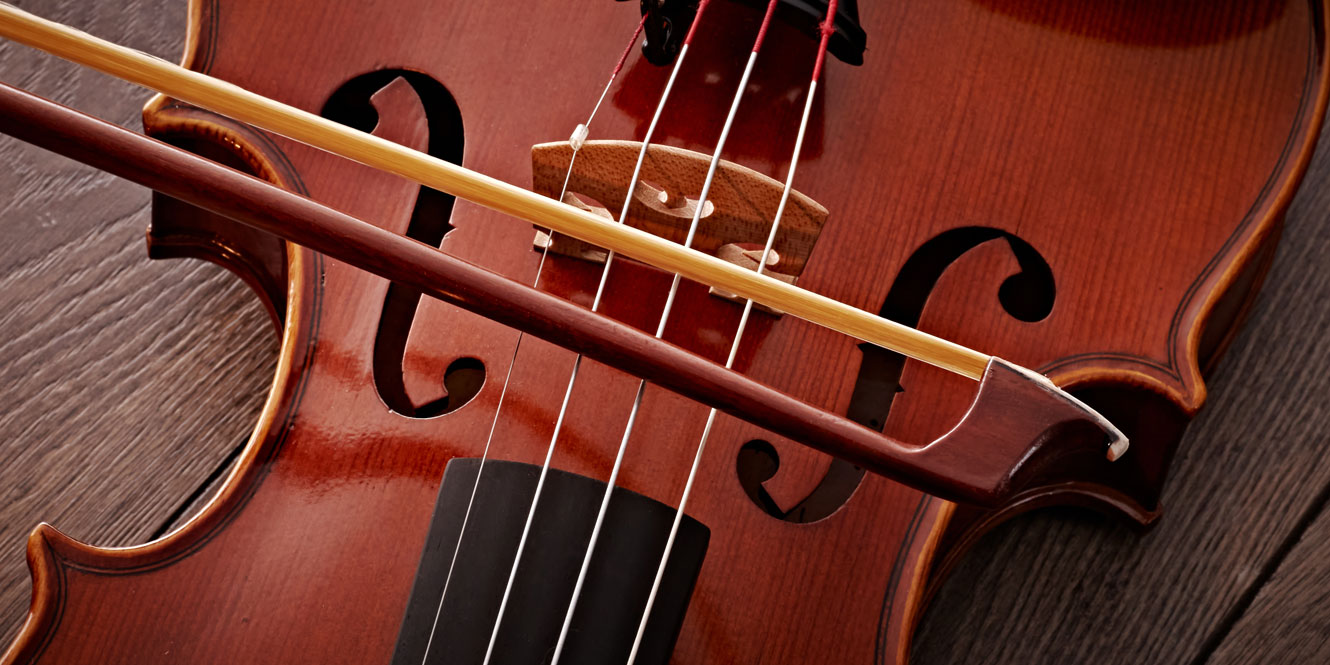
FAQs
Which bow is best for the violin?
The best violin bow is the Goetz and Leicht GL-V Carbon Violin Bow. This is made from carbon fibre which is resistant to any environmental factors that can cause warping. It also includes a leather thumb grip that makes the bow easy and comfortable to hold.
Who makes the best violin bows?
Two of the best violin brands are Goetz and Leicht and Glasser. These two makers have a catalogue of bows that are both high-quality in design and durable in their construction. With carbon fibre builds and excellent balance, if you have a bow from one of these brands, you’ll have one that lasts years and is a dream to use.
How much does a really good violin bow cost?
Exceptionally premium violin bows can cost anywhere between £800 and £2000; this is due to the wood quality and sound quality of the bow. The better the quality of the bow, the easier it will be to perform various techniques. For a midrange bow that is still durable and comfortable to use, budget approximately £80 to £200.
Final thoughts
The right violin bow is an important accessory to go alongside your instrument. There’s no point in having a beautiful violin if you have an ill-made bow gliding across its strings
Factors such as weight, materials, shape, and build quality are all crucial to consider – and luckily our list of the best violin bows has all these checkboxes ticked! We hope we’ve helped you find the right one for you!

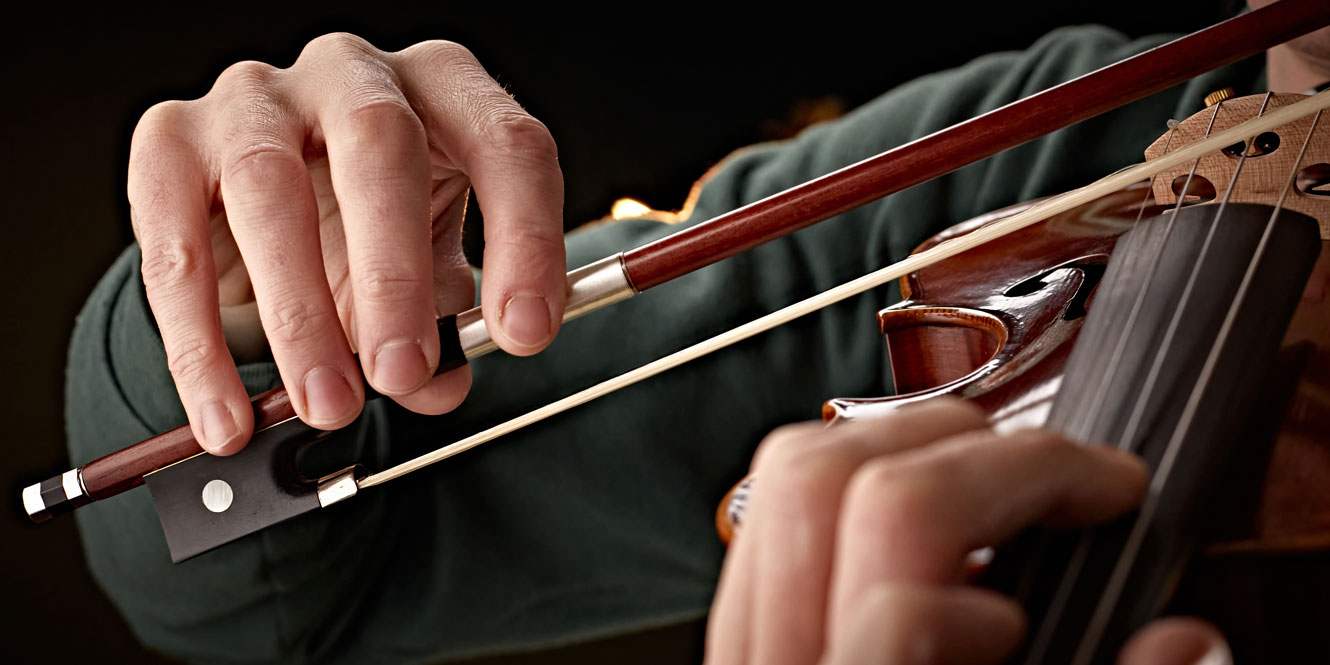











0 Comments